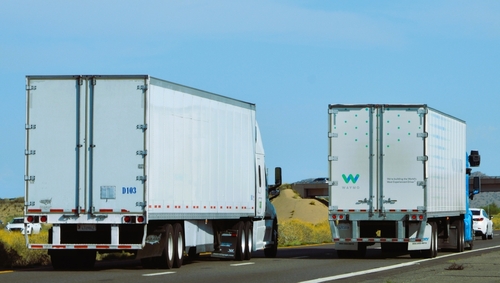
National Transportation Safety Board Chair Jennifer Homendy said she supports a proposal from the National Highway Traffic Safety Administration (NHTSA) and the Federal Motor Carrier Safety Administration (FMCSA) to require new heavy vehicles to have forward collision avoidance systems.
According to the notice of proposed rulemaking from the agencies, new vehicles weighing more than 10,000 pounds would be required to have forward collision avoidance systems, which would include forward collision warning, automatic emergency braking, and electronic stability control systems.
“Decades of NTSB investigations have made clear that collision avoidance systems on heavy vehicles will saves lives and are a critical piece of the Safe System approach to road safety,” Homendy said. “Stability control systems are an important component for these collision avoidance systems and also help prevent loss of control and rollovers. We applaud NHTSA and FMCSA on taking this important step to prioritize the safety of heavy vehicles and stop the public health crisis on our roads.”
The NTSB recommended collision avoidance technology in 1995, which included forward collision warning as a solution to crash avoidance. Requiring collision avoidance technology on all new vehicles has been something the NTSB has wanted to see put in place since 2021, the agency said.
The agency said the rule would ensure the systems are inspected, maintained and functional, something investigators noted in a crash in Mt. Pleasant Township, Penn.
In that January 5, 2020 crash, a bus carrying 59 passengers ran off the right side of the road, hit an embankment and overturned. Two trucks towing semitrailers that were following the bus hit it. The bus drivers and two passengers on the bus died, as well as two people in one of the trucks. Another 49 bus passengers and a codriver of the other truck were injured.
Inspectors found that one of the truck’s collision avoidance systems was not operational in that crash.
The NTSB said it will continue to evaluate the proposed rule and to submit comments on it in the future.